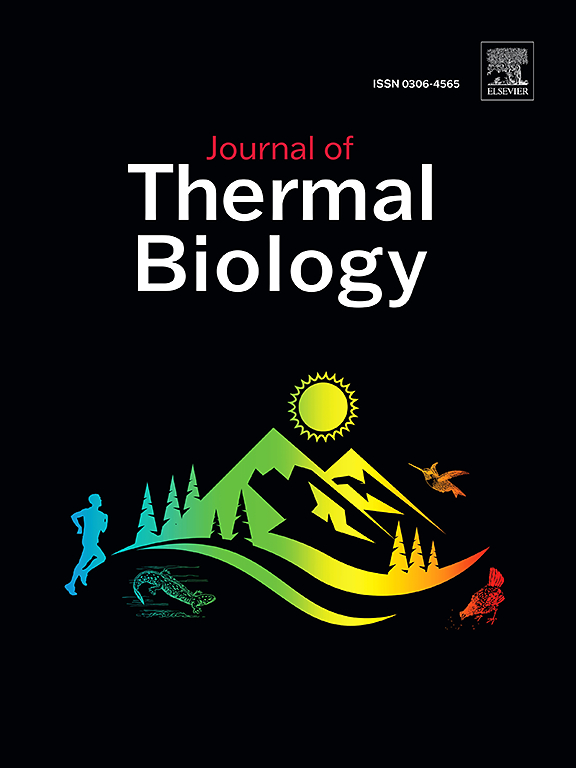意外体温过低的治疗:在主动外部复温装置上方或下方放置绝缘材料对温度和烧伤风险的影响
IF 2.9
2区 生物学
Q2 BIOLOGY
引用次数: 0
摘要
意外体温过低的院前治疗通常包括使用主动外部复温,通常使用化学或电加热垫。积极的外部复温是一种推荐的治疗方法,但有烧伤的风险,如果组织温度超过43°C,就会发生烧伤。一些设备制造商不鼓励皮肤直接接触;然而,对于患者和器械之间应该放置的绝缘材料的类型或数量,没有任何建议。我们旨在描述不同器件上下不同绝缘材料对接触区域温度的影响。方法将三种不同的主动外部复温装置悬挂在能够记录表面峰值和平均温度的热像仪上方。在20分钟的时间里,测试了9种不同的场景,在设备的上下各有不同的绝缘层。这些设备包括一个电阻加热垫、一个氧激活的化学加热毯和一个醋酸钠化学加热包。每30 s记录一次峰值表面温度,每次试验后计算平均表面温度。结果共测试了3种不同设备的9个场景,共27个实验。不同器件的峰值表面温度的变化情况不同。该电器件的最高平均温度为42.9℃,峰值温度为51.4℃。氧反应化学加热装置最高平均温度为27.2℃,峰值温度为57.5℃。醋酸钠化学热包的最高平均温度为50.4℃,峰值温度为56.2℃。结论不同保温材料的数量和相对放置位置不同,设备的温度发展特征不同,且均有可能超过皮肤潜在热损伤阈值。救援人员需要意识到他们使用的复温设备的好处和风险。本文章由计算机程序翻译,如有差异,请以英文原文为准。
Treatment of accidental hypothermia: Impact of insulation placement above or below an active external rewarming device on temperature and burn risk
Introduction
Prehospital treatment of accidental hypothermia typically involves using active external rewarming, usually either with chemical or electrical heating pads. Active external rewarming is a recommended treatment method, but carries the risk of burn injury, which can occur if tissue temperature exceeds 43 °C. Some device manufacturers discourage direct skin contact; however, there are no recommendations regarding type or amount of insulating material that should be placed between the patient and the device. We aimed to describe the impact of different insulating materials above and below various devices on the temperature at the contact area.
Methods
Three different active external rewarming devices were suspended above a thermal imaging camera capable of recording the peak and average temperature of a surface area. Nine different scenarios with varying layers of insulation above and below the device, were tested over a 20-min period. The devices included an electric resistive heat pad, an oxygen-activated chemical heating blanket, and a sodium acetate chemical heat pack. Peak surface temperature was recorded every 30 s, and average surface temperature was calculated after each test.
Results
Nine scenarios for three different devices were tested, resulting in 27 experiments. Development of peak surface temperature varied between devices. The electric device reached a highest average temperature of 42.9 °C and a peak temperature of 51.4 °C. The oxygen-reactive chemical heating device reached a highest average temperature of 27.2 °C, with a peak temperature of 57.5 °C. The sodium acetate chemical heat pack reached a highest average temperature of 50.4 °C and a peak temperature of 56.2 °C.
Conclusions
The devices demonstrated different temperature development characteristics depending on amount and relative placement of insulation, and all had the potential to exceed the threshold of potential thermal injury to the skin. Rescuers need to be aware of both the benefits and risks associated with the rewarming devices they use.
求助全文
通过发布文献求助,成功后即可免费获取论文全文。
去求助
来源期刊

Journal of thermal biology
生物-动物学
CiteScore
5.30
自引率
7.40%
发文量
196
审稿时长
14.5 weeks
期刊介绍:
The Journal of Thermal Biology publishes articles that advance our knowledge on the ways and mechanisms through which temperature affects man and animals. This includes studies of their responses to these effects and on the ecological consequences. Directly relevant to this theme are:
• The mechanisms of thermal limitation, heat and cold injury, and the resistance of organisms to extremes of temperature
• The mechanisms involved in acclimation, acclimatization and evolutionary adaptation to temperature
• Mechanisms underlying the patterns of hibernation, torpor, dormancy, aestivation and diapause
• Effects of temperature on reproduction and development, growth, ageing and life-span
• Studies on modelling heat transfer between organisms and their environment
• The contributions of temperature to effects of climate change on animal species and man
• Studies of conservation biology and physiology related to temperature
• Behavioural and physiological regulation of body temperature including its pathophysiology and fever
• Medical applications of hypo- and hyperthermia
Article types:
• Original articles
• Review articles
 求助内容:
求助内容: 应助结果提醒方式:
应助结果提醒方式:


